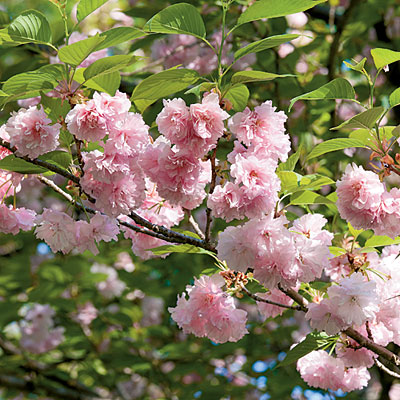Kwanzan Cherry
Category: Fruit & Nut Trees

Kwanzan Cherry has a number of names depending on the locality. It can be referred to as the Hill Cherry, East Asian Cherry, Japanese Cherry or Oriental Cherry. It is usually found in China, Korea and Japan. It usually has a special placing in the culture of the locals and its blossoms are used in displays during festivals.
Description
Kwanzan Cherry is a rather small deciduous tree that has a short single trunk coupled with a dense crown that can go as high as 39 feet. The bark is smooth and has a chestnut brown color. Its lenticels are horizontal. The arrangement of the leaves is alternate, ovate-lanceolate and simple measuring between 5 and 13 cm in length. They also have a short petiole and a serrated margin. Towards the end of autumn, its green leaves turn red, yellow or crimson.
Flowering
This cherry has double pink flowers which are vase shaped and have a rounded crown which tends to spread as the tree ages. This makes it wider as it nears maturity. The Kwanzan Cherry tree produces the flowers in racemose clusters each consisting of between 2 and 5 flowers. The flowering occurs during spring at the same time with the sprouting of new leaves. The wild type of cherry has five petals in each flower.
The Leaves
When new leaves appear around spring, they are usually bronze in color and turn dark green, copper or yellow as fall draws to a close. Kwanzan Cherry is usually grafted onto mazzard (Prunus avium ) stock or alternatively it can be grown from cuttings. Many growers prefer trees propagated on their own roots. In terms of the environment and soil structure, this tree grows well in sites which receive direct sunlight and have well drained, loose soil.
Its level of alkaline and drought toleration is commendable but it is very sensitive to pollutants. It has a lifespan ranging from 15 to 25 years.

 Back To Category Fruit & Nut Trees
Back To Category Fruit & Nut Trees